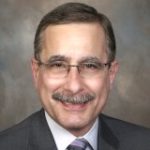

This guest commentary is by Bob J. Lavigna with CPS HR Consulting. Bob is the author of the book “Engaging Government Employees,” and director of the Institute for Public Sector Employee Engagement, a division of CPS HR Services, an independent government agency. This article originally appeared on RouteFifty.
Jim Goodnight, CEO of SAS, a business software company perennially on Fortune’s list of 100 Best Companies to Work For, once said, “My chief assets drive out the gate every night. My job is to make sure they come back.”
Goodnight’s comment should also resonate with government. Public sector employers need to make sure their “assets” keep coming back too, if not physically then virtually.
The coronavirus has dramatically affected the workplace, including in government. Organizations now face a double whammy–hiring new and retaining employees.
According to the Bureau of Labor Statistics, job vacancies in the U.S. economy are at an all-time high, and Americans quit their jobs in record numbers in May. In government, the number of quits increased by 13% in the past year.
A recent national survey revealed that one-third of responding employees are planning to look for a new job. Many said the pandemic has given them a new perspective on work, and 71% said they would leave an employer whose values don’t align with theirs. Prospective and current employees expect organizations to continue to offer maximum flexibility in where and how people work.
While public-sector organizations devote considerable time, effort and resources to hiring, they often overlook the other side of the talent coin—retention (and its evil twin turnover). This is a mistake because replacing a departed employee can cost up to 150% of the employee’s annual salary.
Government, therefore, needs to focus not only on attracting talent, but also keeping it. One answer to this challenge is to continue to give employees flexibility in where and how they work.
According to a Bloomberg headline, “Americans are Done With 5-Days a Week in the Office.” Our Institute’s national survey of public-sector employees revealed that 85% of respondents working remotely for the first time want to continue at least part time.
But only a relatively small proportion of public-sector employees are “office workers” who can operate remotely. Most employees in fields like public safety, firefighting, emergency services, public works, health care, transit and public education can’t phone or video in. In local government, these occupations typically account for the majority of the workforce, and competition for this talent is intensifying. For example, Waste Management Inc. is now offering college scholarships to the family members of its 36,000 full-time employees. Tough for government to compete with a perk like that.
That’s why government needs to go deeper to understand and then minimize unwanted turnover. This includes:
- Analyzing turnover data to understand who is leaving and staying—and why.
- Measuring and improving employee engagement.
Who’s leaving and who’s staying?
Most organizations know what their overall turnover rate is. But this may only be the tip of the iceberg. The rest of the story is understanding who is leaving. A seemingly low overall turnover rate can mask workforce problems while a high turnover rate may not necessarily be a cause for concern.
Specifically, the organization needs to know if it is losing:
- The best performers
- New hires.
- Employees in specific demographic groups (e.g., gender, race/ethnicity, veteran’s status).
- Senior leaders, managers or supervisors.
- Employees in specific work units, occupations or pay levels.
Beyond the who is the why. High turnover among certain groups or work units can signal a problem and require a deeper dive. However, if turnover is higher because of long-delayed retirements (and the number of retirements nationally has increased), this may not be a big problem.
Understanding why employees are leaving can require collecting quantitative or qualitative data by drilling down on turnover data, and conducting exit interviews, stay interviews (asking employees why they remain with the organization), focus groups and employee surveys.
The bottom line is that monitoring and managing retention requires understanding who is staying and leaving – and why – and then applying the results to drive retention.
Measuring and Maximizing Employee Engagement
Decades of research have shown that employee engagement matters. High-engagement organizations achieve their strategic goals, are more productive, deliver more responsive customer service—and have lower turnover. According to Gallup, high-engagement organizations have 43% lower turnover than low-engagement organizations.
Research by our Institute has shown that engaged employees in government are three times more likely than disengaged employees to believe their organization is achieving its mission. This connection is critical for retaining talent because many public servants were attracted to their organizations because of mission.
Unfortunately, there isn’t a one-size-fits-all solution to improving engagement. By one count there are about 90,000 public-sector organizations in the U.S. Each is different. The key to improving engagement is understanding the level of employee engagement in the organization—the baseline—and what influences engagement. The best way to collect this data is to survey employees to understand how they feel about their work and the organization.
And then taking action to improve engagement by focusing on what employees say matters to them.
Our national research has revealed that the following factors can influence engagement in government.
- Strong and empathetic leadership.
- The work itself.
- Training and development.
- Employee appreciation and recognition.
- Effective supervision.
However, in working with organizations across the nation, we have seen wide variations in the level of engagement and what influences engagement, even by department or agency within the same jurisdiction.
In other words, just like minimizing unwanted turnover, improving engagement requires data—and the commitment to act on the data
Robert J. Lavigna is the Director, Institute for Public Sector Employee Engagement, CPS HR Consulting. Bob Lavigna is an award-winning public sector leader and innovator. He is currently the Director of the CPS HR Institute for Public Sector Employee Engagement™. The Institute is dedicated to helping public sector and nonprofit organizations measure and improve employee engagement. His first book, Engaging Government Employees: Motivate and Inspire Your People to Achieve Superior Performance, was published by the American Management Association and is now in its second printing.
Before joining CPS HR, Bob was Assistant Vice Chancellor and Director of HR for the University of Wisconsin, a university ranked among the world’s top 25 research institutions. Bob’s previous positions include Vice President-Research for the Partnership for Public Service, Senior Manager of Consulting for CPS HR Services, and Director of the Wisconsin civil service system. He began his career with the U.S. Government Accountability Office.
Bob is an elected Fellow of the National Academy of Public Administration, was selected as a “Public Official of the Year” by Governing magazine, and received the highest individual achievement awards from the International Public Management Association for HR (IPMA-HR) and the National Association of State Personnel Executives (NASPE). He was also the first HR executive to be awarded a fellowship from the Council of State Governments. In addition, the organizations Bob has led have received innovation awards from the Ford Foundation, IPMA-HR, NASPE, Society for Human Resource Management and others.
Bob is a past national president of IPMA-HR and past national chair of the American Society for Public Administration Section on Personnel and Labor Relations. He has a B.A. in Public Affairs from George Washington University and an M.S. in HR from Cornell University.
